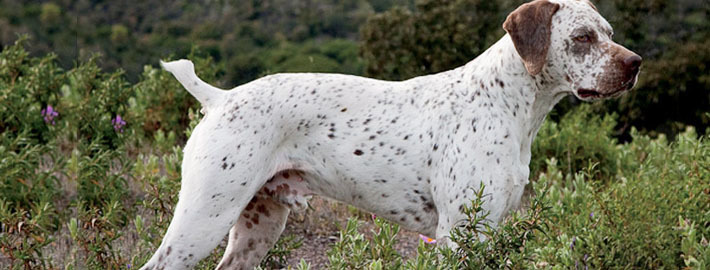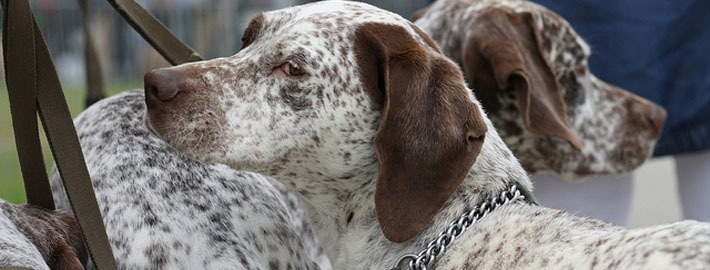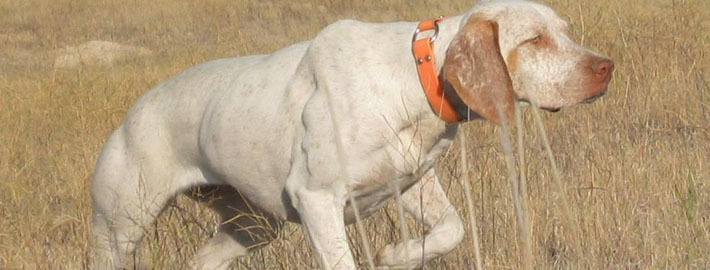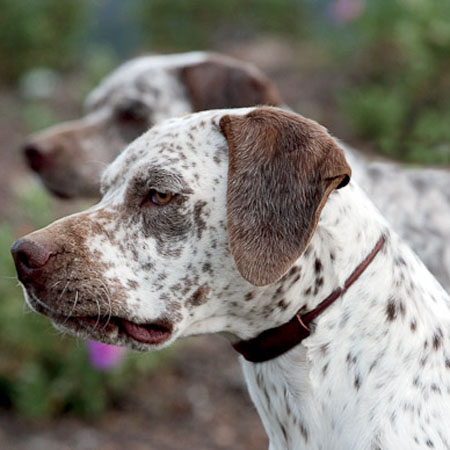What makes the Braque du Bourbonnais Unique?
With a name that illustrates its job as a pointer, it is not surprising that this French breed is one of the best. This highly energetic breed is also a good fit for active families that enjoy spending time outdoors.
Breed Groups
Page Contents
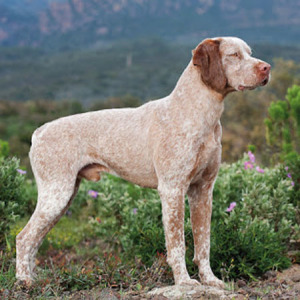
Is the Braque du Bourbonnais Right For You?
These dogs crave human attention and become very attached to their family members as a result. Properly socialized Braque du Bourbonnais get along well with children, but they tend to be too boisterous for households that contain toddlers. If these dogs are well trained, they will be polite and even friendly towards strangers. Some members of this breed can be dog aggressive, but most get along well with and even prefer to live with other canines.
In 5 Words
- Cooperative
- Calm
- Kind
- Agreeable
- Intelligent
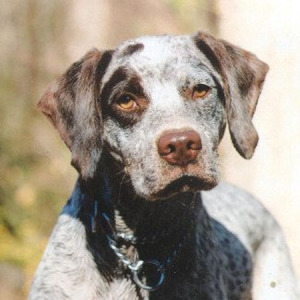
Characteristics
Learn About the Braque du Bourbonnais
Description
General Description
Braque du Bourbonnais are moderately sized dogs with an appearance that is both stocky and athletic. These dogs tend to move at a gallop. They possess pear-shaped heads, rounded skulls, wide noses, strong muzzles, and muscular necks. A scissors bite is preferred for these dog,s but level bites are similarly considered acceptable. Braque du Bourbonnais also have large, round eyes that range in color from dark amber to hazel. Members of this breed also have medium-length drop ears which may curl inward or hang straight down against their cheeks. Dogs are often born without tails, but low-set, very short tails are also common. Docking is a possibility in places where the practice is not illegal.
Coat
Members of this breed have short coats that are occasionally harsher and longer on their backs. Shorter, glossier fur can likewise be found on their ears and heads. Braque du Bourbonnais have white coats with small liver and fawn markings. These patterns were formerly known by the more poetic names of ‘wine dregs’ or ‘faded lilac’ and ‘peach blossom’, respectively. Roan colorations may also be found in members of this breed.
Size
Females of this breed stand between 18.5 and 22 inches (48 and 55 centimeters). They weigh anywhere from 35 to 50 pounds (16 to 22.5 kilograms). Male Braque du Bourbonnais stand about 19.5 to 23 inches (51 to 57 centimeters) tall and weigh from 39 to 55 pounds (17.5 to 25 kilograms). Show dogs can deviate from the recommended height by only a centimeter according to Fédération Cynologique Internationale (FCI) standards.
Short History of the Braque du Bourbonnais
With a documented history dating back to the 16th century, Braque du Bourbonnais count themselves among the oldest French pointer breeds. Early reports describe them as being pleasant tempered, handsomely formed, and able to endure hard work. It is thought that Braque du Bourbonnais count Spanish pointers among their ancestors. Like many of their contemporaries, these hunting dogs were named after the region in which they originated. Although the Braque du Bourbonnais breed was never wildly popular, hunters knew of them and the dogs were commonly found throughout their native country during the 17th century.
The introduction of the English Pointer roughly 300 years later lessened the demand for the Braque du Bourbonnais, but the breed’s numbers did not fall to seriously critical levels until around the First World War. Once the fighting was over, the Club du Braque du Bourbonnais was formed with the intention of restoring the dogs to their former glory. In 1930, a breed standard was adopted and things began to get underway. Unfortunately, the outbreak of the Second World War put a damper on their efforts and not many dogs were whelped during those years. The breed was even omitted from the Federation Cynologique Internationale (FCI) shortly thereafter.
Temperament
When given plenty of exercise, Braque du Bourbonnais are calm, affectionate, and devoted companions. These dogs crave human attention and become very attached to their family members as a result. Properly socialized Braque du Bourbonnais get along well with children, but they tend to be too boisterous for households that contain toddlers. If these dogs are well trained, they will be polite and even friendly towards strangers. Some members of this breed can be dog aggressive, but most get along well with and even prefer to live with other canines. When raised around other pets, these dogs may be able to coexist but it better if they are not introduced to households that already contain small animals that the Braque du Bourbonnais may regard as prey.
Caring for Your Braque du Bourbonnais
General Health
Although the average lifespan for this breed is 12 to 15 years, pet owners should note that there are some health conditions that can occasionally occur. Cataracts, congenital heart defects, hip dysplasia, bloat, and pulmonic stenosis are typical in this breed. Problems with the eyes have also been observed in these dogs.
Care
Daily
Members of this high energy breed require at least a quarter hour of vigorous daily exercise.
Weekly
Braque du Bourbonnais should have their coats brushed on a regular basis. Brushing their teeth frequently will also help keep the dogs in good oral health.
Monthly
Flea, tick, and heartworm prevention medication is a must for all dogs. Most of these products are typically administered on a monthly basis.
Grooming & Bathing
Braque du Bourbonnais do not shed much and only need a bath when they get dirty. However, owners will want to regularly check their dog’s ears for debris and parasites. The aforementioned appendages should be cleaned as needed in order to prevent infections. The dog’s toenails should also be kept trimmed as needed.
Exercise & Training
Braque du Bourbonnais learn quickly and these intelligent dogs are considered fairly trainable as a whole. However, a firm hand and consistent rules are needed when teaching members of this breed. If these dogs do not get enough attention or exercise, they are very likely to display destructive habits. Braque du Bourbonnais that are ignored may also become depressed.
This is not a couch potato breed and prospective owners should take note of that fact. These dogs need plenty of space in which to run and are badly suited for apartment life. Members of this breed will be at their best when they belong to a family that allows them to serve their original purpose as hunting dogs.

